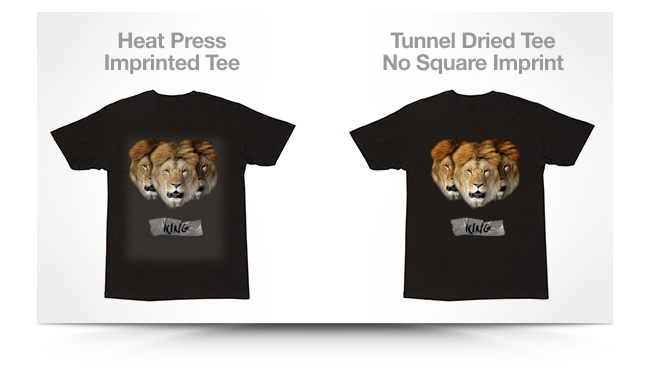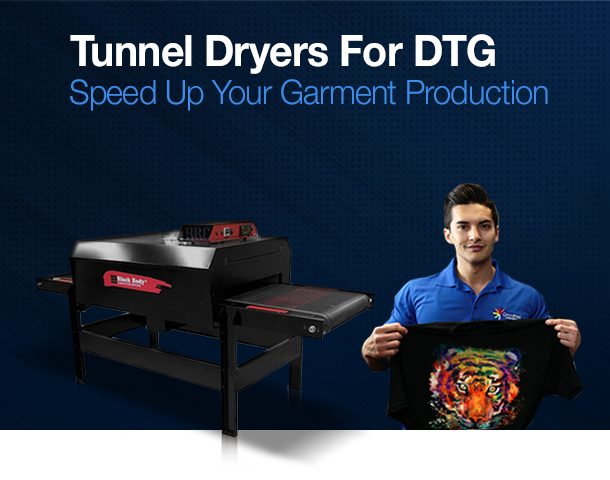One of the great advantages of direct to garment is its ability to grow along with your business production needs. Starting out with a single heat press to dry pretreatment and cure prints will be sufficient to begin growing your trade. As orders begin to increase you will find that you spend a lot of time waiting for the heat press to finish curing the last garment you printed. Adding a second heat press is the next step to help increase production. This will help keep the printing flowing with no waiting on a press. However, heat presses do have some drawbacks like a visible square sometimes, dulling and the print and constant changing temperatures and pressures.

If you have a high production environment or are getting more and more orders, a tunnel dryer is going to be the best option. You can dry pretreated shirts and also cure your garments with a dryer. Because there is no pressure involved, you will not get a square imprint on your garment and your prints will have more vibrancy to them. Using a conveyor dryer will leave prints with more of screen print feel to them. Wait time is not an issue and shirt are just laid down onto the conveyor once printed. When it comes to high production and curing of DTG prints, a conveyor is the best option. Not just any conveyor dryer works for DTG though. It is very important that a “Forced Air” dryer is used and is not too compact in size. Black Body or BBC makes a conveyor dryer specifically for DTG printing called the AIR 2408 Forced Air Dryer. Because this press is made for DTG you can really control things like the time specifically spent in the chamber. An infrared option is also built in for use with screen printing. As your production moves forward and time becomes more and more crucial tunnel dryers are not only just for screen printers.


Interested in more info on a tunnel dryer.